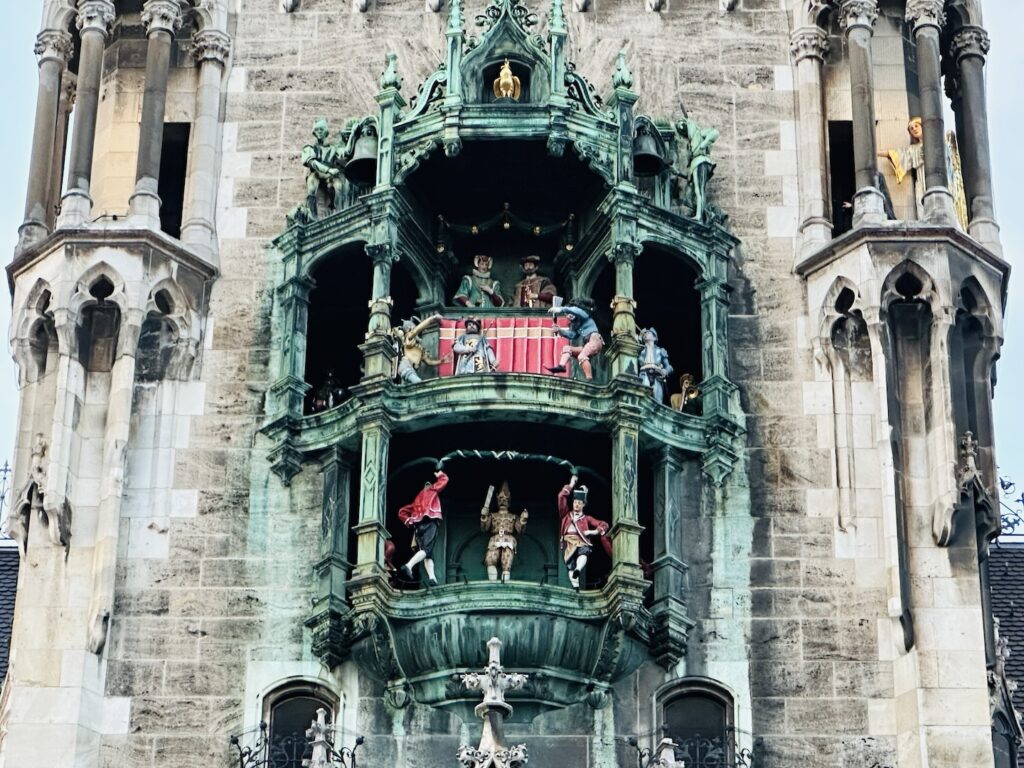Imagine being one of the four kids in 1940 who stumbled upon amazing cave art that dates back almost 20,000 years. That’s what happened in the tiny village of Montignac in southwest France. That accidental discovery opened up impressive ancient art for millions to see. Today’s cave art tours at the International Center for Cave Art (also known as Lascaux IV) immerse you in exact replicas of the original cave art created by Paleolithic humans featuring a variety of animals. Your guided tour will take you through several “rooms” and passageways in the re-created cave and introduce you to fascinating paintings created by early artists and historians’ theories on their origins. A visit here is a perfect day trip from Bordeaux, Sarlat, and several other southwestern French towns.
International Center for Cave Art: Avenue de Lascaux 24290 Montignac | website
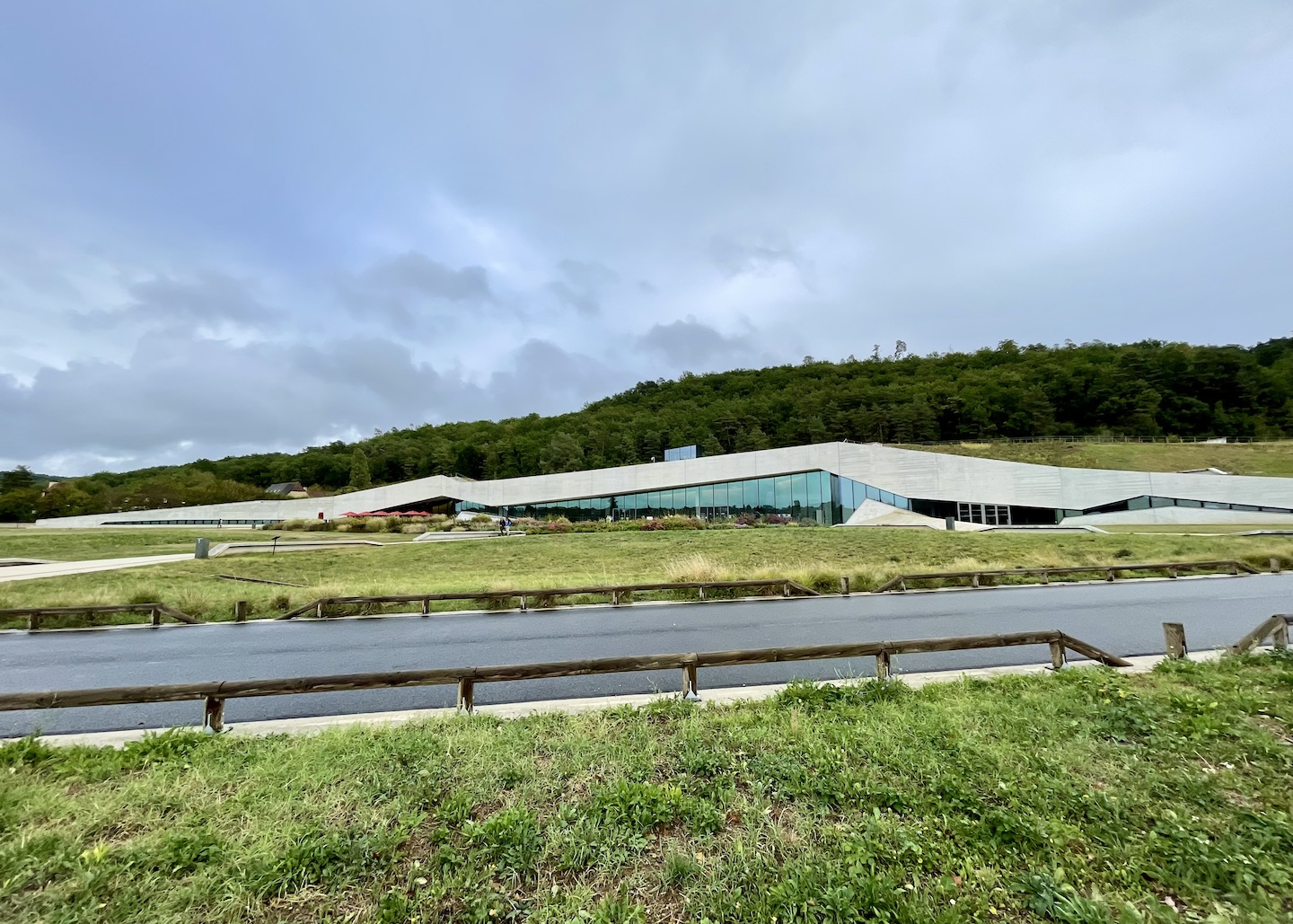
Highlights of a Visit to the International Center for Cave Art
A guided tour through the International Center for Cave Art (or Lascaux IV) takes visitors through different “rooms” within the cave, highlighting hundreds of animals (primarily horses, deer, bison, and cattle) painted on the walls. These “rooms” include the Hall of the Bulls, the Passageway, the Shaft, the Nave, and the Apse. The prehistoric cave art on the tour reveals:
- large paintings (one bull is 17 feet long) made using black, red, brown, and yellow paint.
- painted animals in different positions, some stationary and others running.
- many animals are painted on the cave walls along an imaginary line/ground. Adding dimension to the paintings, some are painted in a concave area on the cave’s wall.
- an understanding and application of symmetry with the placement of animals in relation to each other.
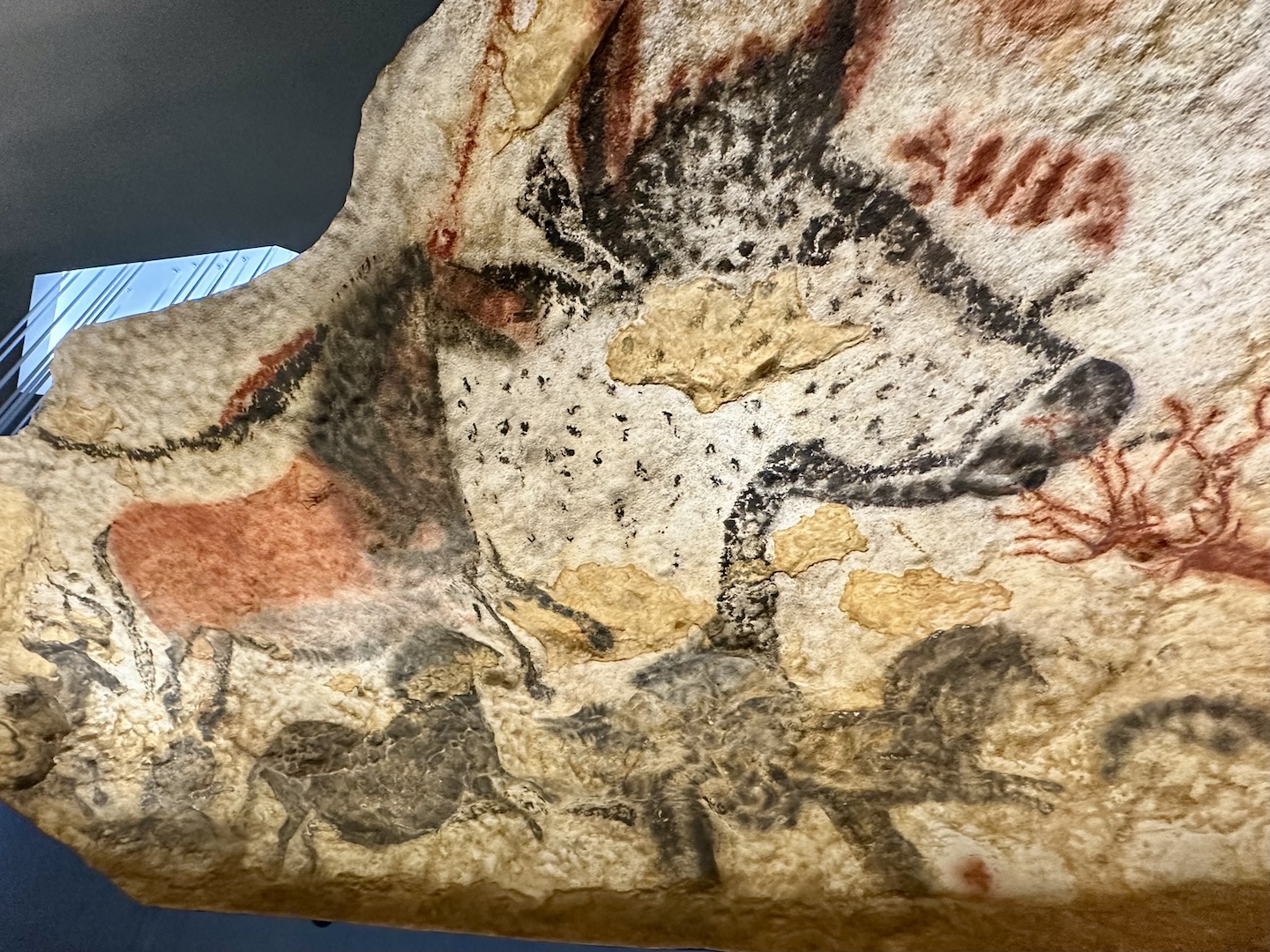
History of The International Center for Cave Art
In 1940, four teenage boys (Georges Agniel, Simon Coencas, Jacques Marsal, and Marcel Ravidat) discovered a cave adorned with art on its walls — dating back tens of thousands of years. Marcel’s dog, Robot, was sniffing around and came across an opening in the ground – the cave! Word spread about the discovery. Two of the boys gave tours in subsequent years. The cave became quite popular, drawing hundreds of thousands of visitors. That multitude of visitors carrying dirt on their shoes and the carbon dioxide they exhaled inside the cave caused troubling issues like algae and bacteria. The original cave was closed in 1963 to preserve the precious artwork. Fortunately, the International Center for Cave Art opened this memorable piece of history to visitors, displaying exact replicas of the original cave art. The original cave was named a UNESCO World Heritage Site in 1979.
Tips for Your Visit to the International Center for Cave Art
- The museum is usually open daily from 9:00 am to 8:00 pm. It is closed from late December through January.
- Admission: Adults – €21; Children 13 years old and up – €13; younger children are free
- The International Center for Cave Art (Lascaux IV) offers only guided tours (about 1 hour long). Most tours are in French, and a few are in English.
- Check online ahead of your visit to learn when English-speaking guided tours are. You may need to navigate through the several screens of the website’s ticketing section to find when the guided tours in English are offered.
- If you can only get a French-speaking guided tour, seeing the unique art is still worth it.
- Don’t expect all the staff to speak English, so have a handy translation app — like Google Translate.
- No photography is permitted inside the cave.
- Once you leave the cave in the museum, you’ll get a tablet (that can be programmed for English) as you walk through a space with exhibits and informational displays to learn more about the cave paintings and how the museum was able to re-create the original art.
- After you leave the cave tour, you can visit a theater showing a video about the museum and its history.
- Nearby Sarlat is a charming town that can be your home base for exploring area highlights.
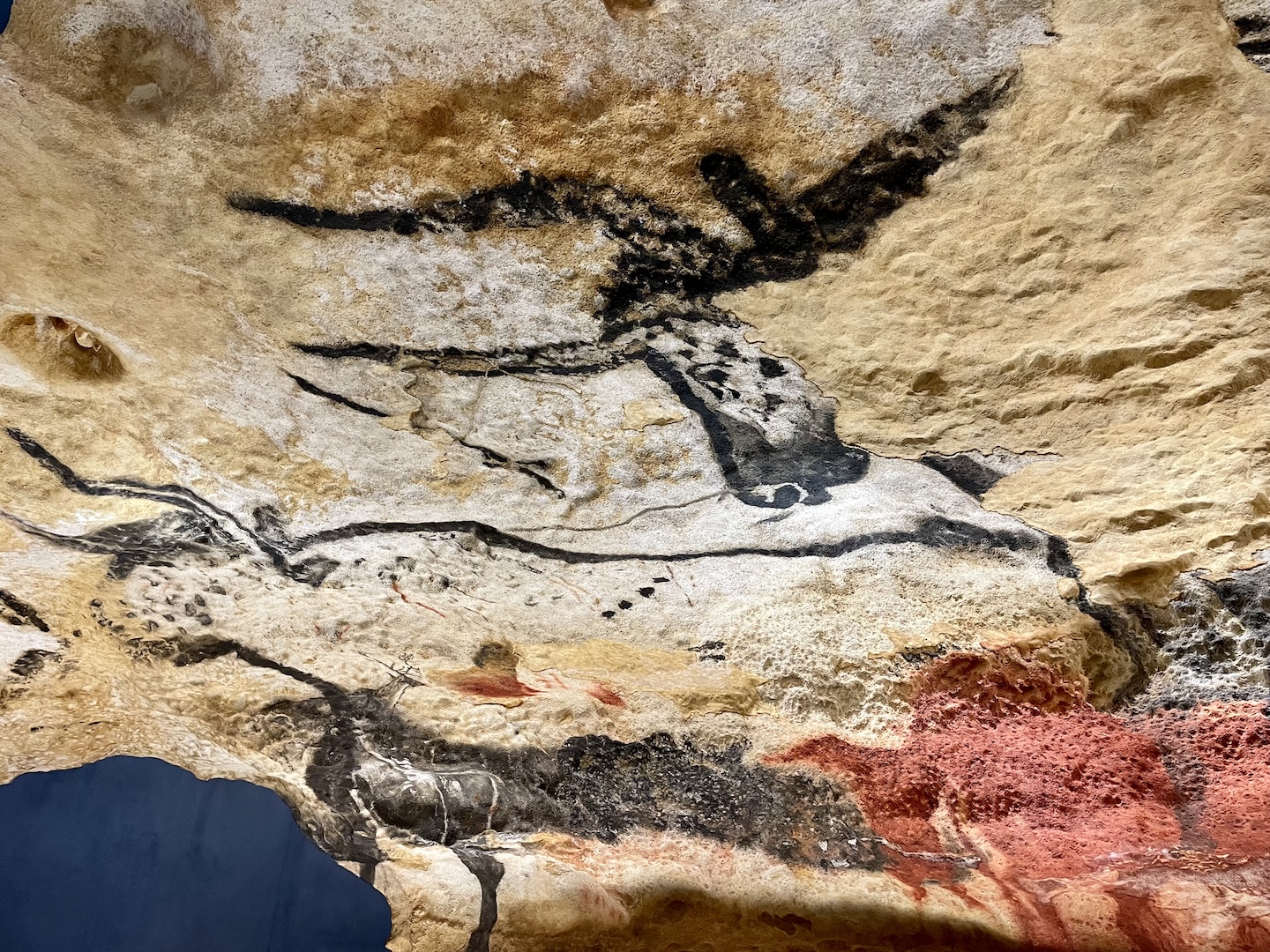
How to Get to the International Center for Cave Art
The International Center for Cave Art is about 14 miles/23 km north of Sarlat-la-Canéda, a great town to use as a home base to explore this region’s scenic villages, centuries-old châteaux, and other historical sites.
The approximate distances from the International Center for Cave Art in Lascaux to other popular destinations are:
- Bergerac – 61 miles/98 km
- Bordeaux – 114 miles/184 km
- Limoges – 83 miles/133 km
- Périgueux – 39 miles/62 km
- Saint-Émilion – 93 miles/149 km
- Sarlat-la-Canéda – 17 miles/27 km
- Toulouse – 130 miles/209 km
Other Area Cave Art Sites
The International Center for Cave Art is perhaps the most well-known and well-visited cave art site. However, there are others to consider, all located in the general area southwest of Lascaux and west of Sarlat-la-Canéda. Some of these other cave art locations have limited hours and/or are small, so they allow minimal access. They are Grotte de Rouffignac, Abri du Cap Blanc, Grotte des Combarelles, and Grotte de Font de Gaume.
If time permits, you may want to visit the Musée National de Préhistoire (Museum of Natural History) in nearby Les Eyzies, which has a collection of prehistoric artifacts found in France.
Related Articles
France
- Best Day Trips from Sarlat in Southwest France
- Bordeaux: The Beautiful Capital of a Historic French Wine-Producing Region
- Exploring France: Normandy, Brittany, Provence, and Paris
- French High-Speed Trains: Tips for Your First TGV Ride
- Saint-Émilion: An Enchanting Medieval Village in Southwest France
- Sarlat, France: A Marvelous Medieval Town to Explore
- Southwest France: Spend a Day Exploring Fascinating Châteaux and Gardens
Trip Planning
- Best Apps and Websites for Savvy Travelers
- Expert Tips for Traveling to Europe for More Fun, Less Stress
- Google Translate Guide for Travelers
- Top 10 Tips for Driving in Europe
- Top 10 Tips for Renting a Car in Europe
- Travel Planning Timeline
Final Thoughts
On my husband’s and my drive from Bordeaux to Sarlat (about a two-hour drive), we stopped at The International Center for Cave Art for a visit. We were both captivated by the scale and scope of the art in the cave. The guide added intriguing context to the art itself. Our visit to The International Center for Cave Art was definitely an enjoyable and thought-provoking highlight of our visit to southwest France. We came away with a deep appreciation for the ingenuity of our millennia-old ancestors who created this magnificent art.
Other nearby cave art sites may be worth a visit, depending on your interest and time, though many have limited hours, and some cap the number of daily visitors. The International Center for Cave Art is your best bet for seeing and learning more about prehistoric cave paintings.
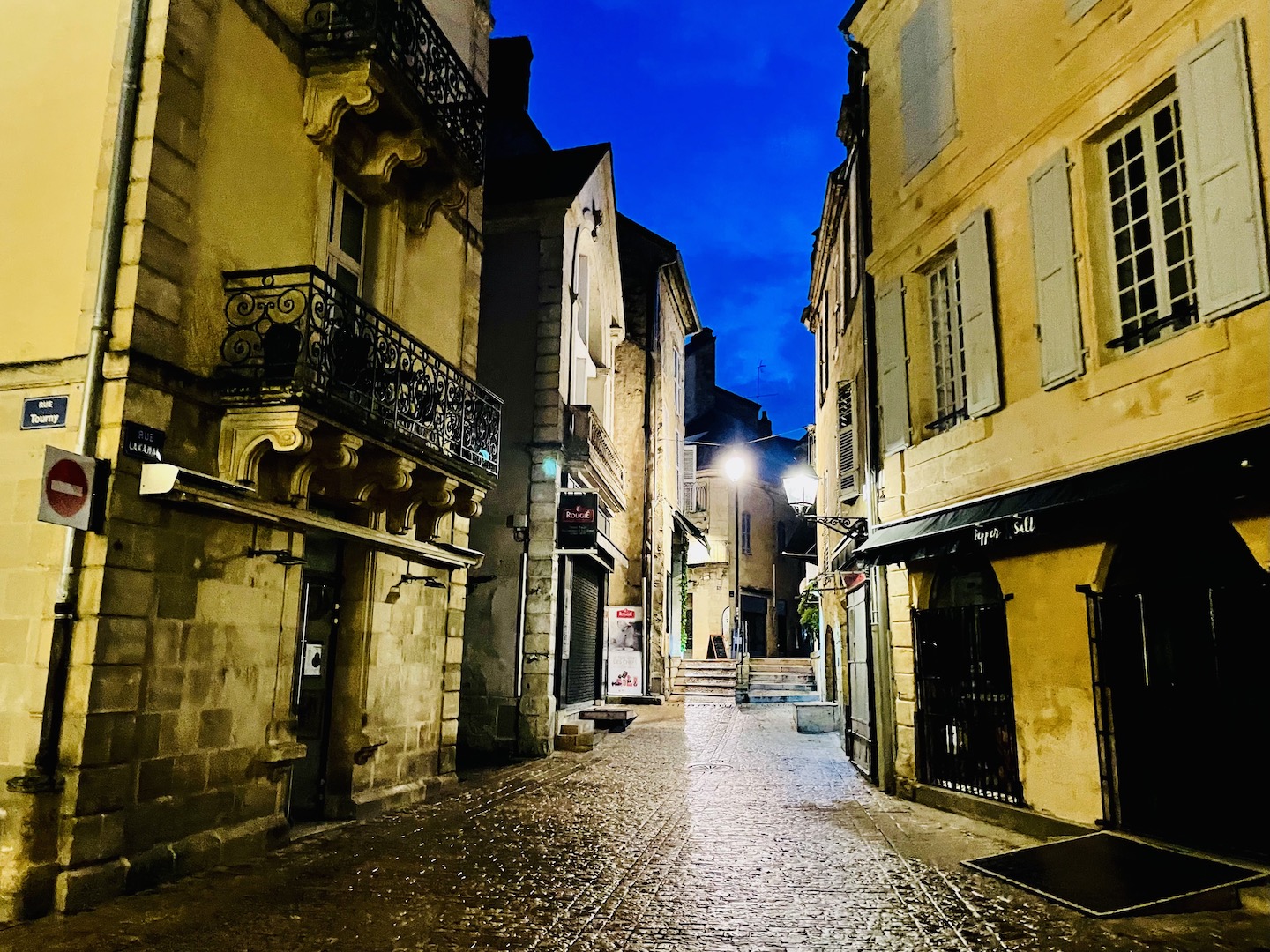
Comments?
Feel free to share your experiences exploring cave art in southwest France and/or suggestions for other places to visit and things to do in the area. Your ideas could be helpful to other travelers. Thanks! 🙂


